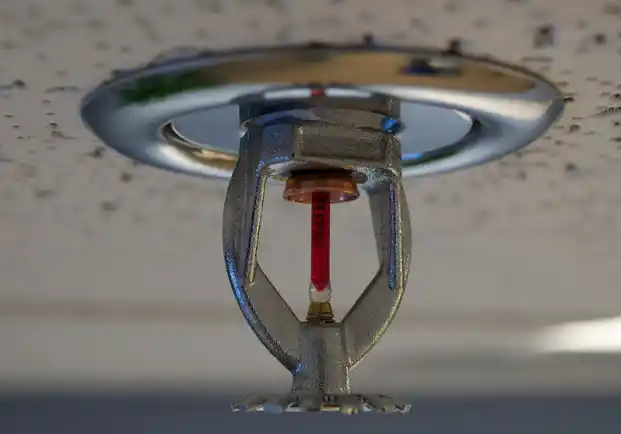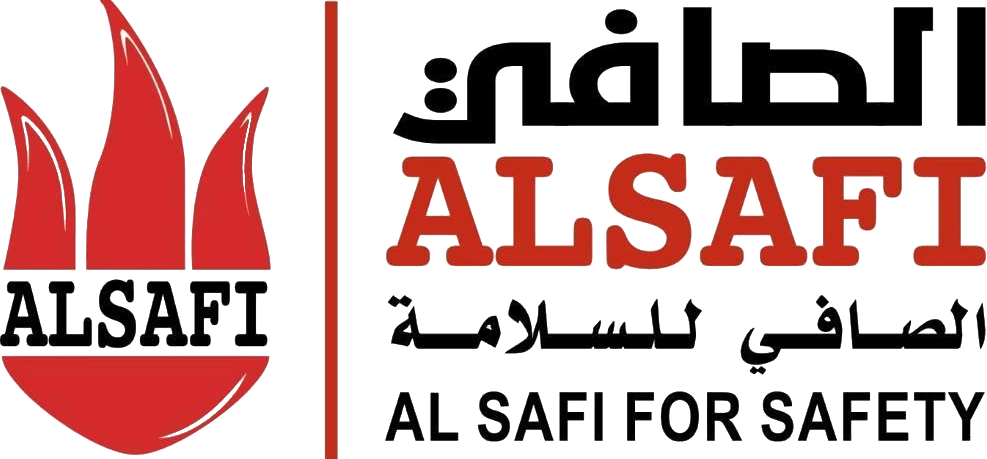المدونة
ما هي انواع رشاشات الحريق؟ وما هي طريقة تركيبها؟

تركيب رشاشات الحريق من الأمور الهامة بأي منشأة صناعية ، تجارية أو سكنية، وضروري كذلك في المستشفيات والمدارس؛ لضمان سلامة كل من الأشخاص والممتلكات؛ حيث تتعدد انواع رشاشات الحريق التي تمثل خط الدفاع الأول بمواجهة أي حرائق مفاجئة؛ لأنها مصممة لتوفير استجابة فعالة للتصدي للحرائق بشكل سريع بأولى لحظاتها بصورة تلقائية، والحد من انتشار النار لتقليل الخسائر البشرية والمادية؛ الأمر الذي يجعل الكثيرون يفكرون في تركيب رشاشات الحريق في منشآتهم.
ستجد عدة انواع الرشاشات للحريق؛ ما قد يجعلك تتساءل أيهما يناسبك؛ لذا فإننا سنوضح لك انواع رشاشات الحريق وكيفية تركيبها وأفضل الشركات التي يمكنك طلبها منها .
ما هو رشاش اطفاء الحريق؟
يُعد رشاش اطفاء الحريق من العناصر الأساسية بأنظمة اطفاء الحريق في المباني؛ لأنه يساعد في إخماد الحرائق بمراحلها المبكرة إلى أن تصل شركات الإطفاء وتقوم بإكمال المهمة.
ويُمكن تركيب رشاشات اطفاء الحريق بكل أنحاء المبنى بما فيها الحوائط والأسقف، وهي تعمل بشكل تلقائي عند زيادة درجة الحرارة عن طريق ضخ الماء فوق المنطقة المتضررة؛ لتثبيط واطفاء الحريق بشكل تام.
ما هي انواع رشاشات الحريق؟
توجد مجموعة متنوعة من رشاشات الحريق، وأنواع هذه الرشاشات تختلف بناءً على العديد من العوامل، ومن هذه العوامل ما يلي:
اتجاه الرش
فيما يلي نوضح لك أنواع رشاشات الحريق حسب اتجاه الرش على النحو التالي:
- المعلقة (Pendent Sprinkler): تعد المعلقة من انواع رشاشات الحريق، ويتم فيها توجيه تيار المياه إلى الأسفل.
- العمودية (Upright Sprinkler): يتشابه هذا النوع مع النوع السابق، لكن الفرق بينهما يتنقل في أن اتجاه المياه يكون إلى الأعلى، ويمكن استخدام هذا النوع بالأماكن التي لها سقف منخفض كمواقف السيارات.
- الجانبية (Side Wall Sprinkler): يُثبت هذا النوع ملاصقًا للحائط، وهذا إذا تعذر تثبيته بالسقف؛ لكي ينساب جزءًا من المياه عليه.
شكل الرشاش
تختلف انواع الرشاشات كذلك، وفيما يلي نوضح لك انواع رشاشات الحريق حسب الشكل على النحو التالي:
- المخفيّ (Recessed Sprinkler): يتم تزويد هذا النوع من الرشاشات بغطاء يمنع إبراز رشاش الحريق للعين، ويبدأ ذلك الغطاء بالانصهار والذوبان عند درجة حرارة أقل من درجة الحرارة التي يحتاج إليها الرشاش حتى يعمل؛ وهذا ليسمح للرشاش برش المياه.
- شبه المخفيّ (Semi Recessed Sprinkler): يتم تركيب الرشاش بهذا الشكل داخل السقف لكي لا يظهر شيء منه، أو يظهر جزء بسيط فقط، ويتم استخدامه في حالة الرغبة بإعطاء مظهر جمالي للسقف.
ما هي طريقة تركيب انواع الرشاشات للحريق؟
تركيب رشاشات الحريق تعد من أهم وسائل الأمان والحماية لكل من المباني التجارية والسكنية، والهدف منها هو توفير الحماية من الحرائق، وفيما يلي نوضح لك طريقة تركيب رشاشات الحريق على النحو التالي:
- قبل أن يتم البدء بتركيب رشاشات الحريق يجب أن يقوم الفني المختص بتقييم المبنى ومعرفة نوع المخاطر المحتملة وما هي درجة خطورتها، ويجب كذلك تحديد المناطق الاستراتيجية التي تساعد على إطفاء الحريق بصورة فعالة، ويتم ذلك التقييم حسب حجم المبنى وحسب طبيعة استخدامه من خلال التواصل معنا في شركة الصافي
- يتم بعد ذلك اختيار النظام الملائم من أنظمة رشاشات الحريق بناءً على احتياجات المبنى، سواء الرشاشات المتطورة أو الرشاشات التقليدية، ويتم بعدها وضع خطة لكيفية توزيع الرشاشات والأنابيب وأماكن التركيب الملائمة.
- يتم تثبيت الأنابيب والرشاشات من خلال فنيين متخصصين معتمدين لضمان الكفاءة والسلامة، وينبغي التأكد من أن كافة الوصلات مُحكمة وأن الأنابيب مثبتة بصورة صحيحة تجنبًا لأي تسربات.
- يجب بعد التركيب إجراء اختبارات للتأكد من أن النظام يعمل بفعالية، ويشمل ذلك اختبار ضغط المياه وفعالية الرشاشات، ويجب أيضًا عمل صيانة دورية لضمان عدم وجود تسريب أو انسداد.
كم عدد انواع الرشاشات المستخدمة في مكافحة الحرائق؟
تُستخدم رشاشات الحريق في اجهزة الاطفاء التلقائي، وتختلف أنواعها حسب المكان وطبيعة الخطر، ولا يوجد عدد محدد بشكل دقيق، لكن بشكل عام توجد أربعة إلى خمسة أنواع رئيسية تُستخدم في أغلب المباني والمنشآت.
يمتلك كل نوع من هذه الرشاشات له طريقة عمل مختلفة، فبعضها يُركب في السقف، وبعضها في الجدران، وهناك أنواع تعمل بسرعة في الأماكن الحساسة مثل المستشفيات والمدارس.
الجدير بالذكر أن الهدف من هذا التنوع هو اختيار النوع المناسب لكل مكان، حتى تكون الاستجابة فعالة في حال حدوث حريق، وفي بعض الحالات، قد يتم استخدام أنواع خاصة حسب طبيعة النشاط، مثل المصانع أو المستودعات.
لماذا تطلب رشاشات حريق من الصافي؟
تُعد شركة الصافي من الشركات الرائدة في مجال السلامة ومكافحة الحرائق؛ لذا فإنها توفر مجموعة متنوعة من رشاشات الحريق لتلبية احتياجات كل أنواع المباني والمنشآت، وفيما يلي نوضح لك مميزات طلب رشاشات الحريق من الصافي على النحو التالي:
- جودة المنتجات: توفر شركة الصافي رشاشات حريق عالية الجودة ويتم تثبيت بالجدران الجانبية والأسقف لتفريغ الماء بشكل تلقائي عند ارتفاع درجة الحرارة؛ للتحكم في الحريق والسيطرة عليه.
- التكلفة المنخفضة: توفر رشاشات حريق تستخدم ماء أقل من خراطيم الحريق، وهي لا تحتاج إلى صيانة دورية كذلك، ويكون ذلك بتكلفة منخفضة.
- الدعم الفني: تحرص الشركة على رضا العملاء؛ لذا فإنها فريق مميز من خدمة العملاء للرد على جميع الأسئلة والاستفسارات على مدار السرعة وفي أسرع وقت ممكن؛ لخدمة جميع العملاء وتلبية متطلباتهم.
- تصاميم مناسبة: توفر رشاشات الحريق بتصاميم مناسبة وعديدة تتناسب مع ديكورات وتصاميم جميع المباني بالشكل الذي يتناسب مع احتياجات العميل.
- مواصفات عالمية: رشاشات الحريق التي توفرها تتطابق مع المعايير والمواصفات الدولية ومتطلبات الدفاع المدني السعودي، وهي تتميز أيضًا بسماكتها وكثافتها وعزلها للحرائق جيدًا.
اتصل بنا الآن ولا تتردد في طلب أفضل رشاشات الحريق بأعلى جودة وبأفضل الأسعار؛ حيث أن رشاشات الحريق من الصافي هي خيارك الأمثل.
باختصار، إذا كنت تفكر في تركيب رشاشات الحريق في منشأتك فإنك ستجد عدة أنواع منها؛ لذا فقد وضحنا لك في هذا المقال ما هي انواع رشاشات الحريق حتى تختار ما يناسب احتياجاتك منشأتك من بينها وتضمن سلامة الأفراد والمنشأة، لكن يجب عليك اختيار رشاشات حريق عالية الجودة وهو ما ستجده في شركة الصافي التي توفر لك أفضل رشاشات الحريق عالية الجودة بأفضل سعر.
أسئلة شائعة قد تدور في ذهنك حول انواع رشاشات الحريق
ما هو العمر الافتراضي للرشاشات؟
يتراوح العمر الافتراضي لرشاشات الحريق بشكل عام بين 20 حتى 50 سنة.
كم المساحة التي يغطيها رشاش الحريق؟
المساحة التي يغطيها رشاش الحريق بدرجة الخطورة الخفيفة تتراوح ما بين 17 إلى 21 متر مربع، ولا تتجاوز أقصى مسافة ما بين كل رشاشين 4.6 متر مربع، والمساحة التي يقوم رشاش الحريق بتغطيتها بدرجة الخطورة العادية تتراوح ما بين 9 إلى 12 متر مربع، وأقصى مسافة ما بين كل رشاشين لا تزيد عن 4.6 متر مربع.
كيف أعرف نوع الطفاية؟
بإمكانك معرفة نوع طفاية الحريق عن طريق الملصق المتواجد عليها؛ حيث أن كل طفاية إما تكون من فئة A أو فئة B أو فئة C أو فئة D أو فئة K أو مجموعة من تلك الفئات، وتشير هذه التصنيفات إلى نوع الحريق الذي يمكن إخماده بواسطة طفاية الحريق.



